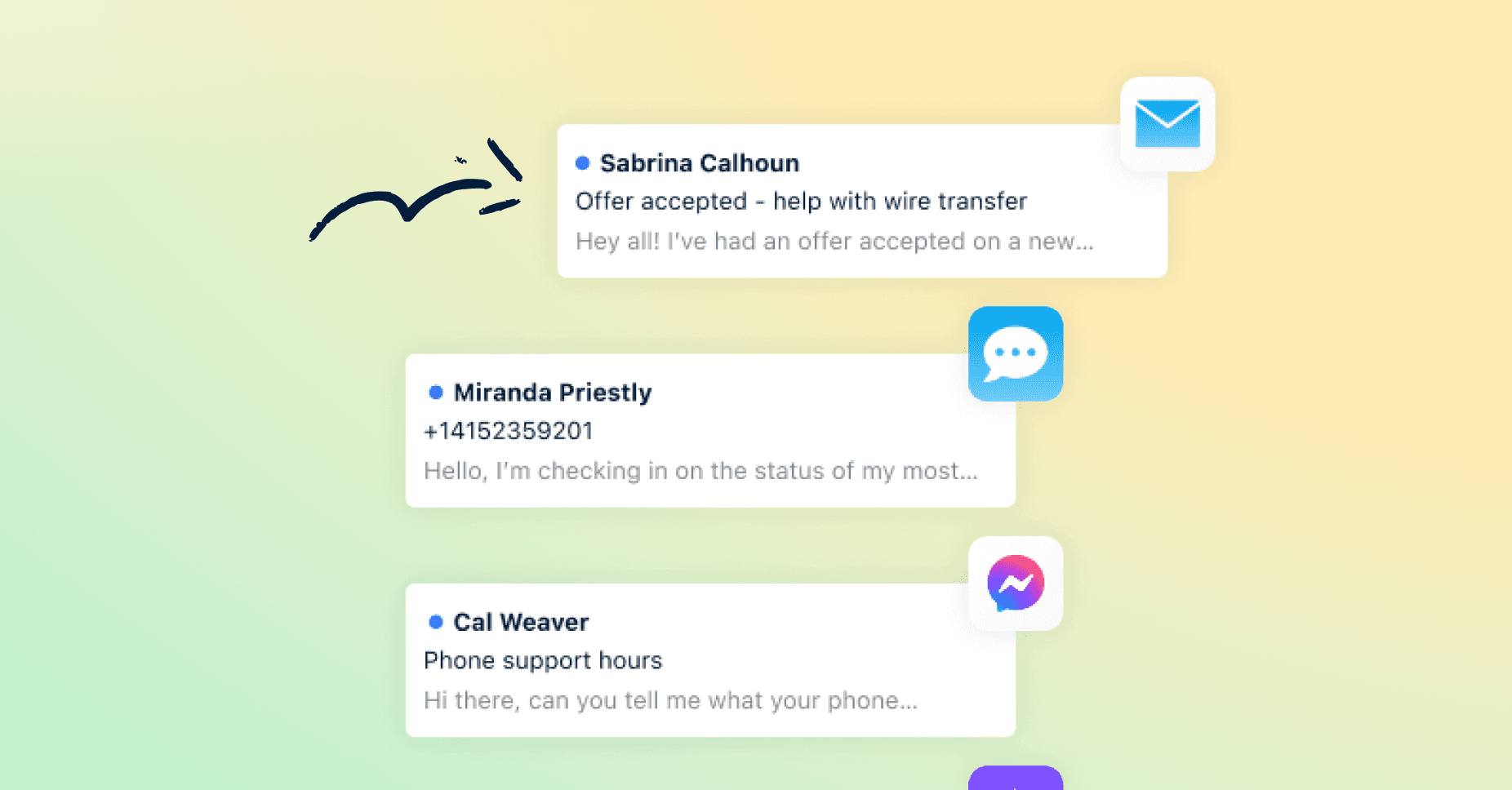In a time when customer expectations are higher than ever, the brands that obsess over the customer experience are the ones that will win. Every interaction, from sales to support, should feel cohesive and effortless. And every team member (and bot) must be informed, aligned, empathetic, and able to build on past interactions without missing a beat.
Delivering that level of service? It’s easier said than done. The right tools, including AI, have a vital role to play (and our team at Front just announced a suite of new ones). But it’s just as important that all teams, not solely customer support, prioritize the customer experience.
Customer experience (CX) leaders, as the connective tissue between customers and internal teams, are uniquely positioned to raise the company-wide bar for customer experiences. At Frontlines, our annual virtual event, our head of customer support, Kenji Hayward, was joined by Stacy Justino, a former support leader at Loom and Wistia, and Skylar Lowery, engineering manager for support tools at Stripe, to chat through how to break the support silo and make customer service a true team effort.
Here, we’ve organized Stacy’s and Skylar’s thoughtful advice into a few key takeaways for your business, including:
How your organization can rise to the challenge of meeting increasingly high customer expectations
Ways that practical applications of AI can help your agents accelerate and improve upon their work
Tips for cross-functional collaboration across your organization
And we’ve coupled each with tips for raising your CX bar from the inside out.
Rising to the challenge of changing customer expectations
Just as the products we love evolve, so do our expectations as consumers, and what satisfied us a few years ago may no longer hit the mark. For instance, Stacy notes that in the gaming industry, there used to be a strong correlation between customer satisfaction (CSAT) and response time.
“In the B2B space, however, it’s more about accuracy and truly solving the user’s problem,” she explains. If a product essential for work isn’t functioning properly, it can hinder your ability to do your job effectively.
Skylar influences both Stripe users and internal teams, enabling him to enhance accuracy through more effective tools. “Broadly speaking, we believe that if our support teams have a good experience, that translates to better customer experiences,” he says.
It’s important to remember that users see your company as one unit. Your customers don’t see all the people and inner workings behind the scenes — it’s probably the last thing they care about — so you need to obsess over how your decisions across these teams impact the user and their experience.
Tips for your team: Regularly review user experiences, especially the negative ones, from both the perspective of agent productivity and overall customer outcomes. Weekly audits help you identify trends. Treat every poor support experience as a “customer incident” that requires a solution and ask: How can we prevent this from happening again? Often, says Skylar, it comes down to tooling.
For instance, when customers are being passed from one agent to another, the root cause could just as easily be a product issue as a gap in internal processes or poor support tools. By analyzing patterns like these, teams can identify whether the problem is product-related or an issue with how customer support is managed (and find new opportunities to automate manual aspects of the work).
Using AI to accelerate your ability to meet customer needs
Research shows that today’s customers want faster responses and resolutions. With all the current advancements in technology, including AI, there are fewer excuses to make mistakes — so they expect to receive the perfect answer immediately. “Not only that, but a lot of customers assume that support teams use AI and have preconceived notions of what that means,” says Stacy.
Indeed, successful AI-powered customer service can boost service quality, increase satisfaction, and drive engagement. But not all use cases are created equal. “We never want to sacrifice quality for speed or cost,” says Skylar, “so we’re cautious about what we let Large Language Models (LLMs) answer and ensure that we focus on the quality of the responses.”
The key is to identify how AI can best help your company. At Stripe, Skylar’s team taps AI at two levels: They use bots to respond to repetitive and straightforward questions from users and leverage LLMs internally to summarize feedback at scale and surface relevant content so human agents provide quick, accurate answers. The LLM is especially helpful in finding themes that might not come up organically in ticket-tagging taxonomy or through direct agent feedback.
Tips for your team: Stacy suggests being transparent with customers about when you’re using AI and why. Internally, make sure your team understands what kind of AI tools to leverage and when. To dispel any fears about your team’s jobs, provide a transparent outline of each tool’s objective and what that means for their day-to-day.
A note of caution from Stacy: Understand how your AI model prioritizes data. “Especially if your product is constantly evolving, a ticket from six months ago might not have the most accurate information,” she says. “In that case, historical ticket data should not be the highest priority.”
And when a customer is feeling stuck, make it easy to chat with a human. “If it’s not working, don’t make your users jump through hoops to talk to a real person,” says Skylar.
The foundation of a customer-first organization: CX as a company-wide objective
Our support teams are at the front lines of customer service, and they receive so many rich insights based on the nature of their workload. But to truly build a customer-first organization, the savviest leaders recruit everyone to deliver the best possible experiences.
“The most important component is ensuring your company is culturally aligned with the idea that good user outcomes are the top priority,” says Skylar.
Stacy adds, “And no matter what your job is, you’re going to do it so much better if you really understand the product. This way, everyone has deep empathy for the customer experience.”
Stripe prioritizes cross-functional engagement with new hires diving into support queues and regularly reviewing customer feedback. At Wistia and Front, every newbie participates in an “all-hands support” session, ensuring that even employees in finance and engineering gain firsthand insights into customer interactions. Wistia repeats this every quarter to stay abreast of what’s top of mind for customers.
Tips for your team: A crucial first step is ensuring there’s a shared language across the company for how you talk about customer problems, issues, and feedback. “Having a thoughtful lexicon across the organization ensures everyone is speaking the same language and making feedback actionable,” says Stacy. “For support teams, it’s important to understand the product road map and company objectives so that when they share feedback, it resonates.”
At Loom, Stacy had a strong feedback loop with product engineering, and over time, this synergistic relationship sharpened the quality of their new releases. “We would tag incoming tickets related to the new features in a way that aligned with how engineering organized those challenges,” she says.
“Cohesiveness in your product and processes matters a lot,” agrees Skylar. “It’s a cultural note: You have to say it and mean it when you claim to be user-obsessed.”
Don’t just review customer feedback when something goes wrong. Seek it out, solicit it, talk to your customers frequently, and really aim to understand what they’re going through. “If you’re at Stripe, you hear people religiously speaking on behalf of users in practically every conversation,” says Skylar.
Customer-focused CX is everybody’s responsibility.
In short, everyone should strive to make the customer happy. “I’ve seen firsthand the impact a customer-focused company can really have on driving top-line business metrics,” says Stacy. “Working really closely with your counterparts across the business — whether it’s marketing, product, engineering, or sales — really drives results.”
Missed the event? Watch the full recap here.
Written by Front Team










